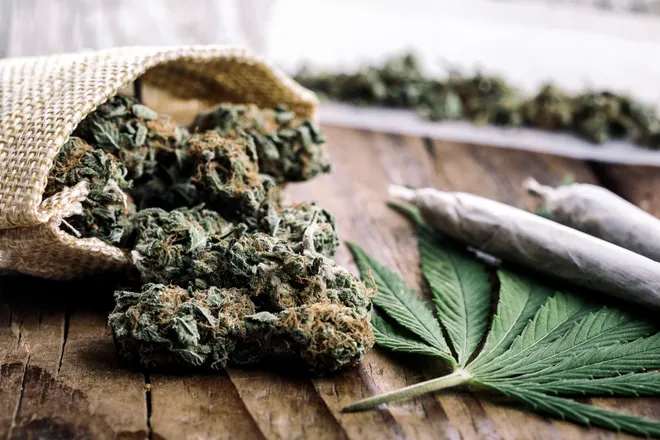Many people wonder how movies influence the way we think about weed. In over 1,200 films, cannabis has made an appearance, shaping public opinion. This article will explore the role of marijuana in cinema and its impact on viewers like you.
Dive in to discover more!
Portrayal of Cannabis in Film
Cannabis has been given different names and associations in film, often influenced by cultural and historical perspectives. Its portrayal has evolved, offering a variety of perspectives on the use and impact of marijuana in movies.
Different names and associations
In movies, you’ll often hear cannabis called by various names like pot, weed, grass, Mary Jane, and a host of colourful slang terms. Each nickname carries its vibe and associations, which filmmakers use to shape characters and plots.
Hollywood has long used these aliases to signal whether the movie will take a humorous or severe tone toward marijuana culture in cinema.
Characters smoking a joint might be portrayed as laid-back or rebellious depending on if they’re puffing on “ganja” or just some “herb.” These subtle cues help paint a picture of how weed fits into the world of film.
From the counterculture movements represented in classic films of the ’60s and ’70s to today’s high-definition comedies, screenwriters weave in these different terms for cinematic effect.
They influence our perception of cannabis within popular culture without us even knowing it.
Cultural and historical perspectives
Cultural and historical perspectives shape the portrayal of cannabis in film. From its association with counterculture movements in the 1960s to its integration into mainstream entertainment, marijuana’s depiction has evolved.
The historical context of cannabis as a symbol of rebellion and freedom is often reflected in films through characters who challenge societal norms or embrace unconventional lifestyles.
Moreover, cultural influences have played a significant role in shaping how marijuana is depicted on screen, with different cultures embracing diverse attitudes and beliefs about the substance.
The representation of cannabis in film also reflects changing social attitudes towards the drug – from taboo to acceptance. As cinema has a global reach, it provides a platform for showcasing various cultural and historical perspectives on marijuana use.
Hollywood’s influence on perceptions of cannabis has been substantial, impacting not only American audiences but also viewers worldwide. The evolution of marijuana representation in film speaks volumes about how cultural values and societal views have shifted over time.
Impact of Cannabis Representation in Film
The portrayal of cannabis in film has a significant impact on societal views and attitudes towards the substance. This influence can be seen in both mainstream and independent films, sparking controversies and critiques regarding the accuracy of its representation.
Influence on societal views and attitudes
Cannabis portrayal in film has a significant impact on societal views and attitudes towards the substance. The representation of marijuana on the big screen often shapes public perception, potentially influencing how people view its use and legalization.
Mainstream films have the power to normalize or stigmatize cannabis, impacting social acceptance and policies. Additionally, independent films may provide more authentic representations, challenge stereotypes, and offer diverse perspectives that contribute to changing societal attitudes toward weed.
The influence of cannabis representation in Hollywood goes beyond entertainment; it plays a crucial role in shaping public opinion and cultural norms related to marijuana. This impact is evident through shifts in popular culture’s treatment of cannabis over time, as influenced by its portrayal in movies.
Representation in mainstream vs. independent films
Mainstream films often present cannabis use in a more sensationalized manner, focusing on its impact and consequences. These movies may perpetuate stereotypes and emphasize the negative aspects of marijuana.
Independent films, on the other hand, tend to offer a more nuanced and realistic portrayal by delving into the complexities of cannabis use. They often explore themes related to personal experiences, social issues, or medical benefits associated with marijuana.
The difference in representation between mainstream and independent films can significantly influence how audiences perceive cannabis. While mainstream movies may reinforce existing stigmas and misconceptions around weed, independent films have the potential to challenge these notions and provide a more authentic depiction of cannabis use.
Controversies and critiques of cannabis portrayal in film
When considering the controversies and critiques of cannabis portrayal in film, it’s crucial to acknowledge the ongoing debate surrounding the glorification versus demonization of marijuana use on screen.
Many critics argue that mainstream films often perpetuate stereotypical representations of cannabis users, portraying them as lazy or unmotivated individuals. On the other hand, independent films have been praised for offering more nuanced and realistic depictions, shedding light on the medicinal benefits and cultural significance of cannabis.
Furthermore, there is a growing concern about how these portrayals may influence societal perceptions and attitudes toward cannabis. While some argue that accurate representation is essential for challenging stigmas and promoting understanding, others caution against normalizing or glamorizing its use.
Conclusion
In conclusion, the portrayal of cannabis in film has evolved, shaping societal attitudes and perspectives. Mainstream and independent films have played a significant role in influencing public perceptions of marijuana.
Despite controversies and criticism, the depiction of cannabis in movies continues to be a topic of discussion within popular culture. The influence of Hollywood on the representation of marijuana in the world of cinema cannot be understated.
